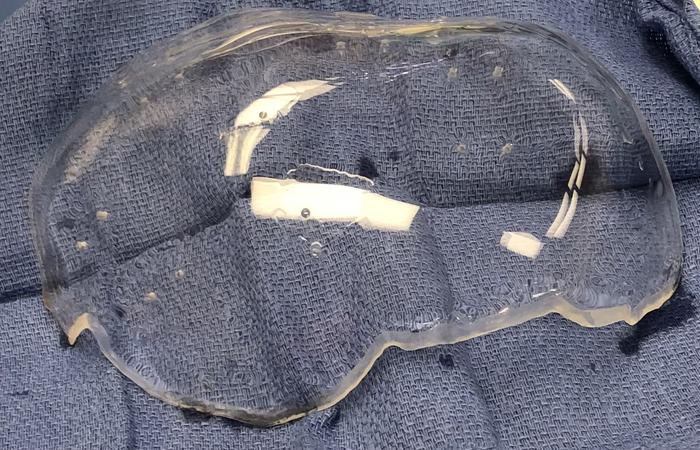Researchers from the Keck School of Medicine of USC and the California Institute of Technology (Caltech) have designed and implanted a transparent window in the skull of a patient, allowing them to collect high-resolution brain imaging data using functional ultrasound imaging (fUSI). The preliminary findings, published in the journal Science Translational Medicine, suggest that this sensitive, non-invasive approach could open new avenues for patient monitoring, clinical research, and broader studies of brain function.
Charles Liu, MD, PhD, a professor of clinical neurological surgery, urology, and surgery at the Keck School of Medicine and director of the USC Neurorestoration Center, emphasized the significance of this study, stating, “The ability to extract this type of information noninvasively through a window is pretty significant, particularly since many of the patients who require skull repair have or will develop neurological disabilities. In addition, ‘windows’ can be surgically implanted in patients with intact skulls if functional information can help with diagnosis and treatment.”
A Unique Case: Jared Hager’s Journey
The research participant, 39-year-old Jared Hager, sustained a traumatic brain injury (TBI) from a skateboarding accident in 2019. During emergency surgery, half of Hager’s skull was removed to relieve pressure on his brain, leaving part of his brain covered only with skin and connective tissue. Due to the pandemic, he had to wait more than two years to have his skull restored with a prosthesis.
During this time, Hager volunteered for earlier research conducted by Liu, Jonathan Russin, MD, associate surgical director of the USC Neurorestoration Center, and another Caltech team on a new type of brain imaging called fPACT. When the time came for implanting the prosthesis, Hager again volunteered to team up with Liu and his colleagues, who designed a custom skull implant to study the utility of fUSI while repairing Hager’s injury.
Challenges and Potential of Functional Brain Imaging
Functional brain imaging, which collects data on brain activity by measuring changes in blood flow or electrical impulses, can offer key insights about how the brain works, both in healthy people and those with neurological conditions. However, current methods, such as functional magnetic resonance imaging (fMRI) and intracranial electroencephalography (EEG), leave many questions unanswered due to challenges such as low resolution, lack of portability, or the need for invasive brain surgery. fUSI may eventually offer a sensitive and precise alternative.
“If we can extract functional information through a patient’s skull implant, that could allow us to provide treatment more safely and proactively,” including to TBI patients who suffer from epilepsy, dementia, or psychiatric problems, Liu said.
The researchers tested several transparent skull implants on rats, finding that a thin window made from polymethyl methacrylate (PMMA) yielded the clearest imaging results. They then collaborated with a neurotechnology company, Longeviti Neuro Solutions, to build a custom implant for Hager.
The research team collected fUSI data while Hager solved a “connect-the-dots” puzzle on a computer monitor and played melodies on his guitar, both before and after the implant was installed. The results showed that fUSI could provide accurate and useful imaging data, albeit with slightly decreased fidelity compared to pre-implant data.
The new technique could offer population-level insights about TBI and other neurological conditions, as well as allow scientists to collect data on the healthy brain and learn more about how it controls cognitive, sensory, motor, and autonomic functions.
While fUSI and the clear implant are currently experimental, the research team is working to improve their fUSI protocols to further enhance image resolution. Future research should also build on this early proof-of-concept study by testing more participants to better establish the link between fUSI data and specific brain functions.


